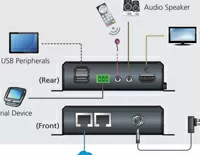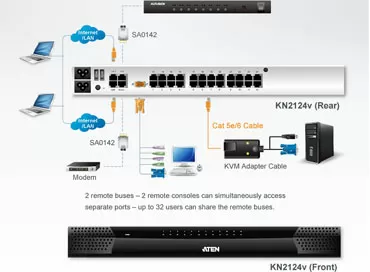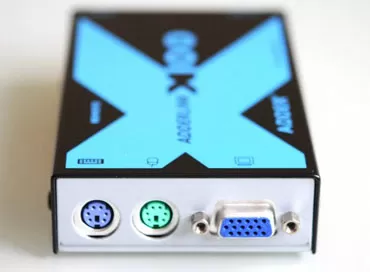16-port IP KVM switch Level One KVM-1650
For modern companies, their own server rack is increasingly a necessity. At a minimum, it includes an internal server, an Internet server, a telephone server, an uninterruptible power supply, and routers. Another device that you will need to manage computers in the rack is a KVM switch that provides console access to the machines. Network KVM switch allows you to connect to any computer without getting up from your Desk in the office, which makes it easier for the system administrator. In addition, support for network functions will allow you to administer from home or from anywhere in the world if you have Internet access. When the equipment works 24/7 and any downtime threatens the company with losses, it is easier to organize a remote connection to the machines than to call the administrator to the site for every reason.
The Deutch company Level One, well known to our compatriots for its consumer-class network solutions, also offers a large selection of network equipment for industrial use. Today we will look at the Level One KVM-1650 network KVM switch for 16 machines.
Level One KVM-1650
The Level One KVM-1650 network KVM switch is manufactured in a standard 1U enclosure and is designed for installation in a 19" server rack. This switch supports cascading architecture, which allows you to use up to eight similar switches to manage a fleet of 64 computers. But about everything in order. Let's start with the device characteristics.
- Key features of Level One KVM-1650
- Web interface: Built-in ports for cascading connection
- Serial DB9 port for modem configuration and connection
- The possibility of simultaneous multiple user access from local console and through the network
- Built-in support for Microsoft Intellimouse, Microsoft Intellimouse Explorer, Logitech Net Mouse and other Microsoft-compatible mouse
- 128-bit SSL encryption for HTTPS connection
- Remote access to external drives via USB 2.0 port
- Support resolution up to 1920x1440, bandwidth 200 MHz
- Auto scan interval 5 to 99 seconds
- Built-in OSD menu
- Sound confirmation of port activation
- Support for DOS, Netware, Unix, Linux, Win 3. x, Win 95/98/98SE/ME, Win 2000/XP, WinNT
Network KVM switch Level One KVM-1650 is interesting because it has a USB 2.0 port for external drive (e.g. USB stick with configuration files) and the serial port to work via a modem is very useful in case the network collapsed and there is no way to access it via Ethernet. For large computer parks where you need to provide console access to more than 16 machines, you will have to use cascading KVM configurations, and in this case, Level One KVM-1650 will please administrators with the presence of special ports for cascading connections. This means that when you connect eight of these switches, you will not lose any console ports and will be able to administer all 128 computers.
Characteristics of Level One KVM-1650
- Ports
- Number of connected computers - 16
- 1 console port
- 1 hardware reset
- port 1 USB 2.0
- port connecting computers
- 15-pin VGA HDDB port combined with PS/2 keyboard and mouse ports
- Connecting a direct console
- PS/2 keyboard port
- PS/2 mouse port
- 15-pin VGA monitor port
- Connecting a remote console
- RJ45 8P8C 10/100 Mbps network port
- Cascading connection of KVM switches (Daisy Chain ports)
- PS / 2 keyboard port
- PS/2 mouse port
- 15-pin VGA monitor port
- Support for up to 8 levels in a cascade
- Serial port
- 1 DB9 port for configuration and external modem
- Manual computer selection
- OSD screen displaying connection information
- Switching via hot-keys
- Built-in buttons of the diaphragm type
- Screen resolution
- Local console-up to 1920x1440
- Remote console - up to 1280x1024
- Metal case
- Installation in a standard 19 " rack
- 1/2U Depth
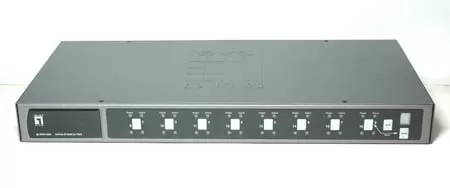
- KVM switch Level One KVM-1650 Itself
- User's guide
- power Supply
- Rack mount angle set
- 1 cable for cascading connection
- 2 cables 15-pin HDD VGA -> 15-pin VGA + PS/2 Keyboard + PS/2 Mouse
- Null modem
- cable USB a - USB B Cable
- CD-ROM with software

There are half as many buttons as there are ports, so to switch to, say, the 15th computer, you need to press Shift and the button number 7. Each of the buttons has 4 led indicators - Power and Activity for each pair of computers.
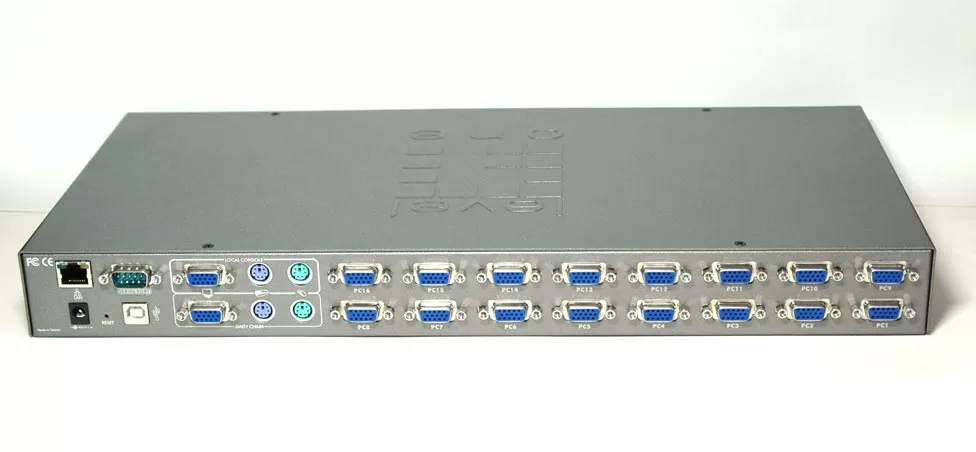
All connections to the KVM switch are made on the reverse side. Here you can find ports for both managed machines, as well as for the local console and cascading connection.
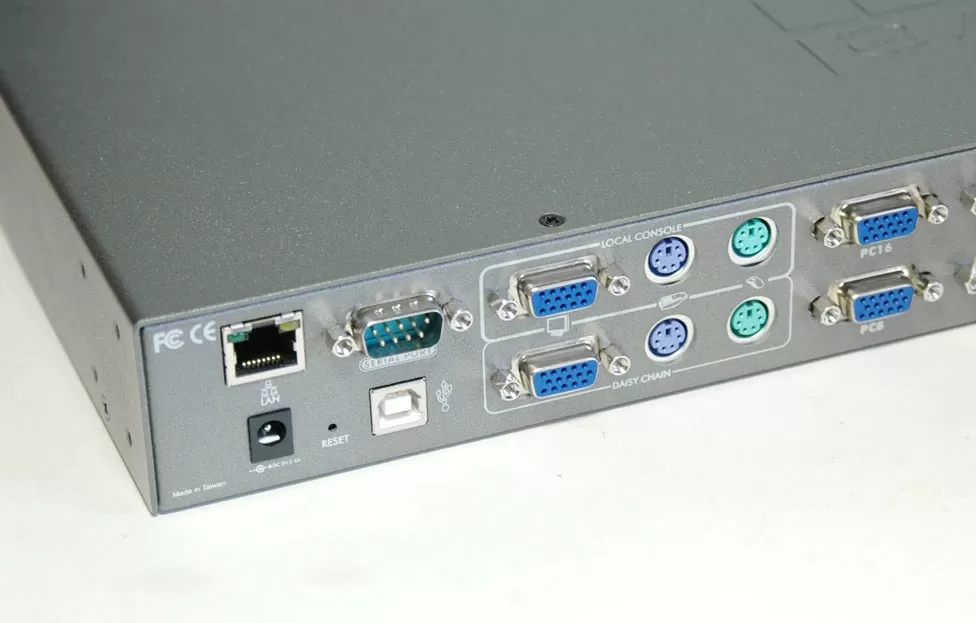
Also on the left side there is a serial COM port and a USB 2.0 port. As we have already mentioned, the KVM-1650 has serial ports that allow you to connect an external data drive and modem to the device for administration over a telephone line, if the network does not work.
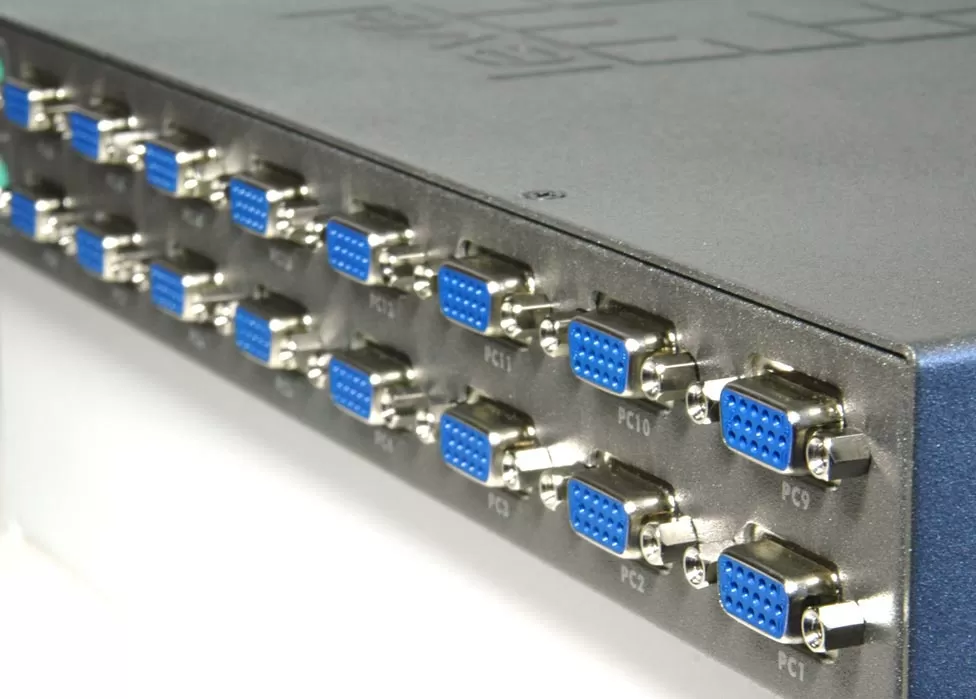
There are two such cables included in the package, so that two servers can be connected to the console. The rest of the cables will have to be purchased separately-this is correct, because the manufacturer cannot predict how many computers you will connect to KVM and how long you need cables, and it would be wrong to force you to pay for 16 two-meter cables. But the manufacturer can predict the cascade installation of KVM, so each device comes with a cable for connecting KVM in the circuit.
Please note that standard connectors are used for cascading, which means that even if for some reason you can't use the cable included in the package, you can purchase separate VGA and PS/2 cables, which is again very convenient.
A null modem cable is used to connect the KVM switch directly to the computer for internal configuration and firmware updates.
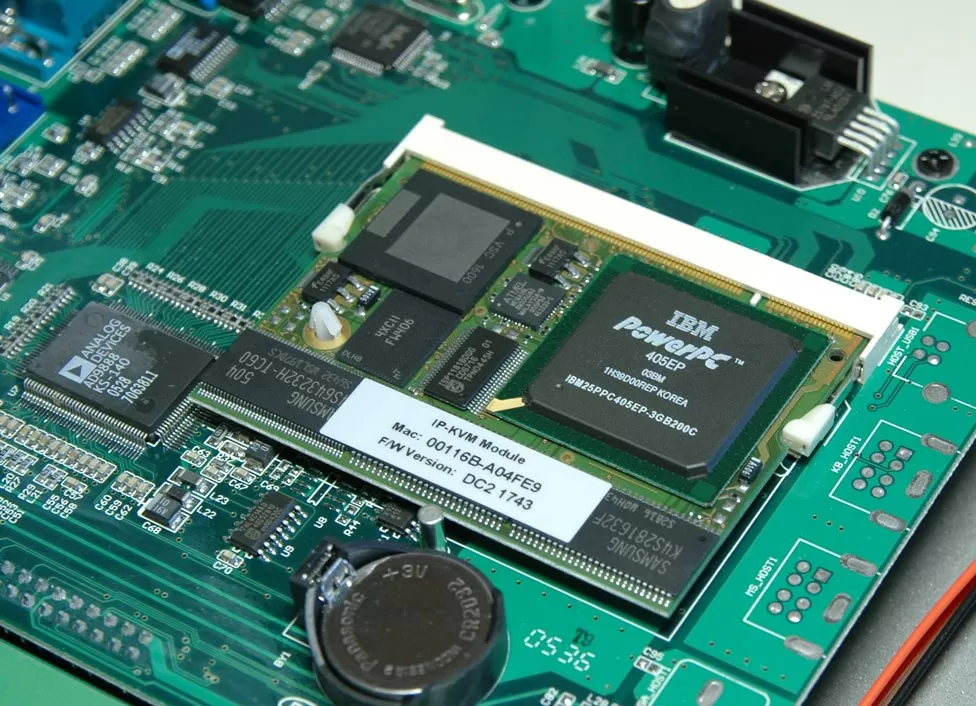
Conclusion
When choosing network equipment for an enterprise, many managers make a choice in favor of proven manufacturers, sometimes not paying attention to the fact that for a lower cost you can buy a product from another company assembled on the same chip, which is not inferior in function. The KVM switch Level One KVM-1650 itself costs about $ 950, and one cable to connect the server to it costs$5. Level One KVM-1650 was originally created for a market with fierce competition, so the manufacturer tried to make its product more attractive: support for an external USB 2.0 drive, convenient manual switching of the console and economical cascading, in which you do not spend the ports you need and can use even ordinary, widespread cables.
The ability to use an external modem in case of interruptions to the IP network will allow you to manage servers even in critical situations when the Internet does not work due to the fault of one of them - via an external modem. You don't have to come to the site to "raise the net". This means that when you buy a Level One KVM-1650, you save not only money, but also electricity and space in the rack cabinet.
Michael Degtjarev (aka LIKE OFF)
25/05.2006









